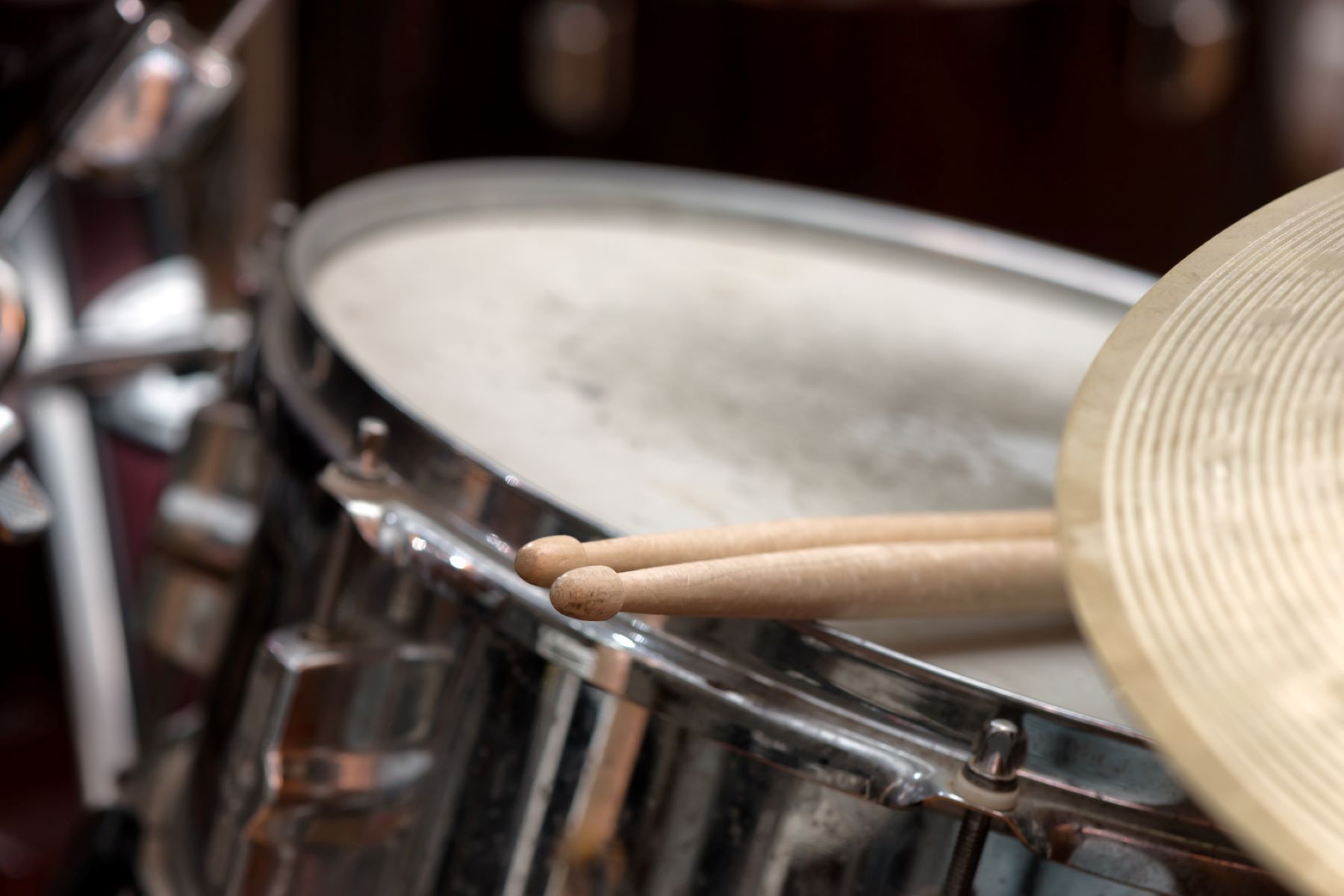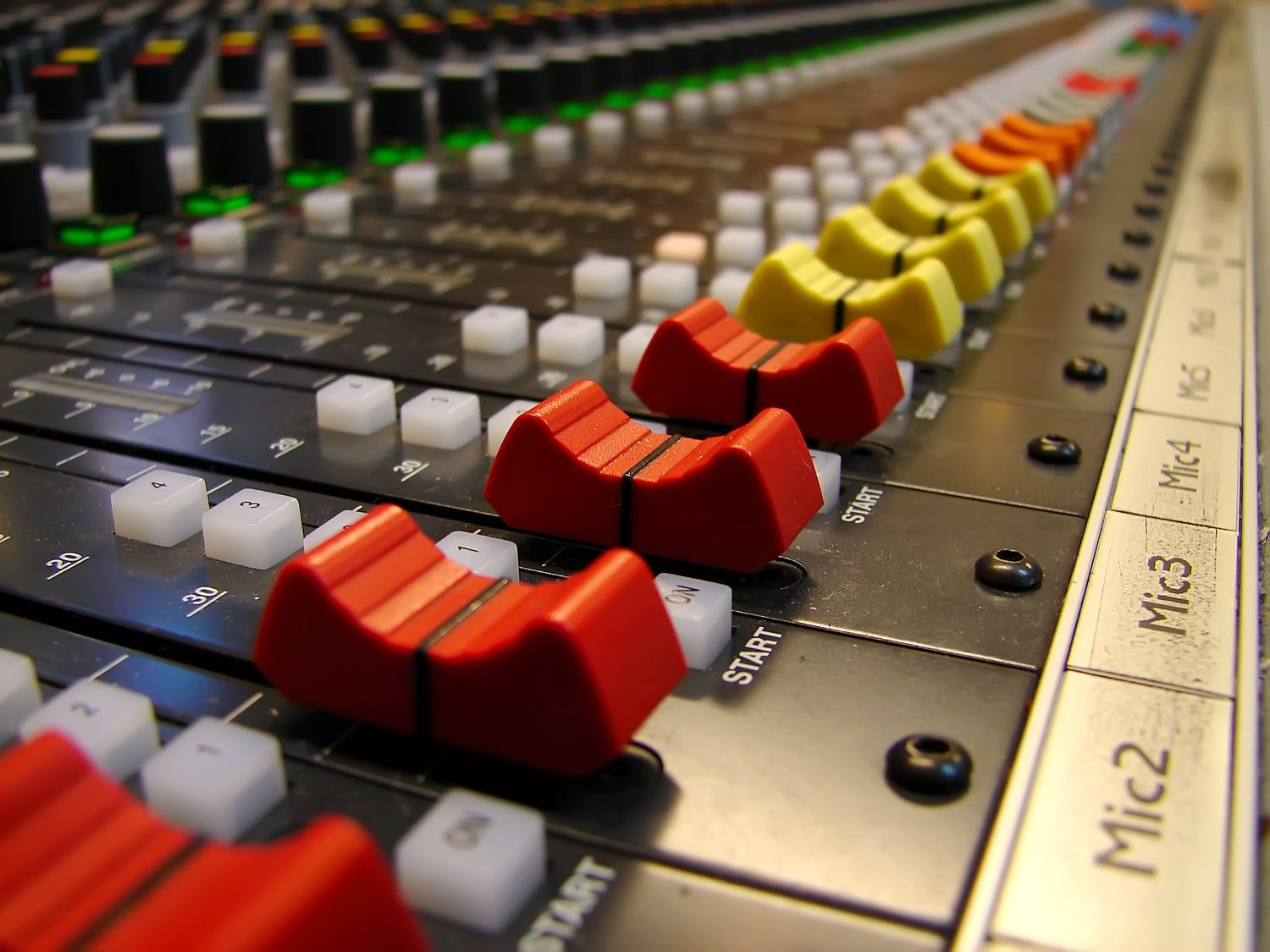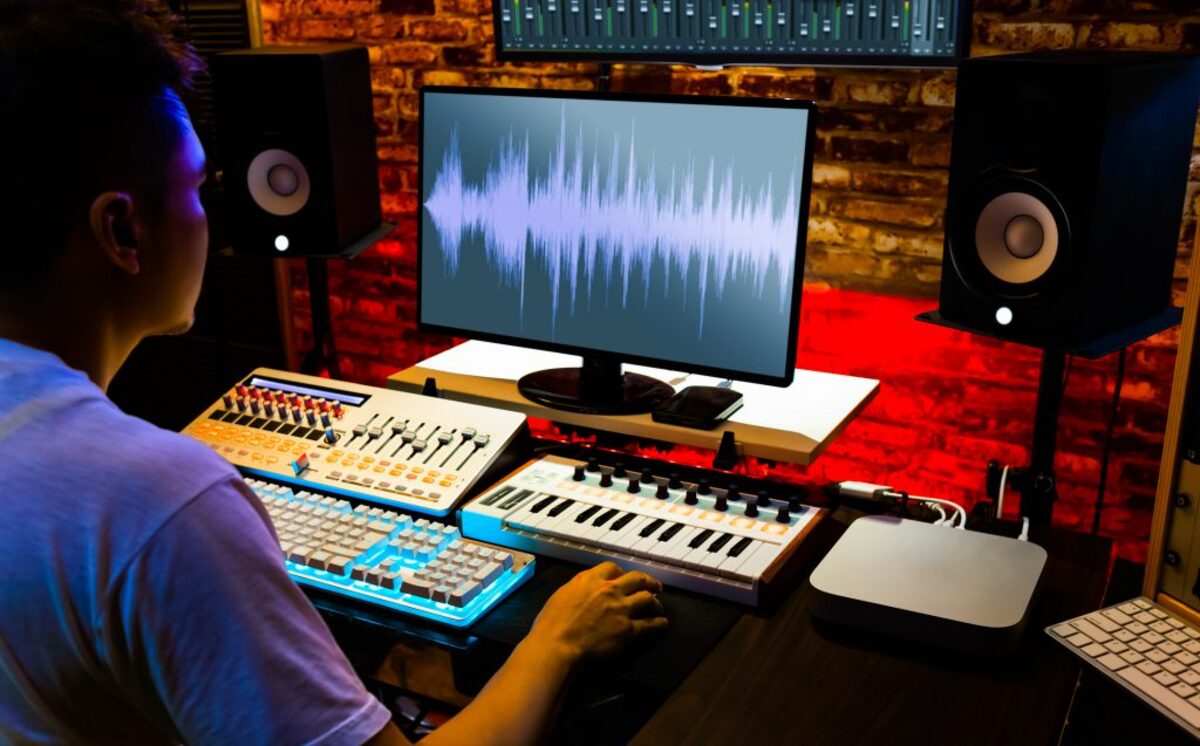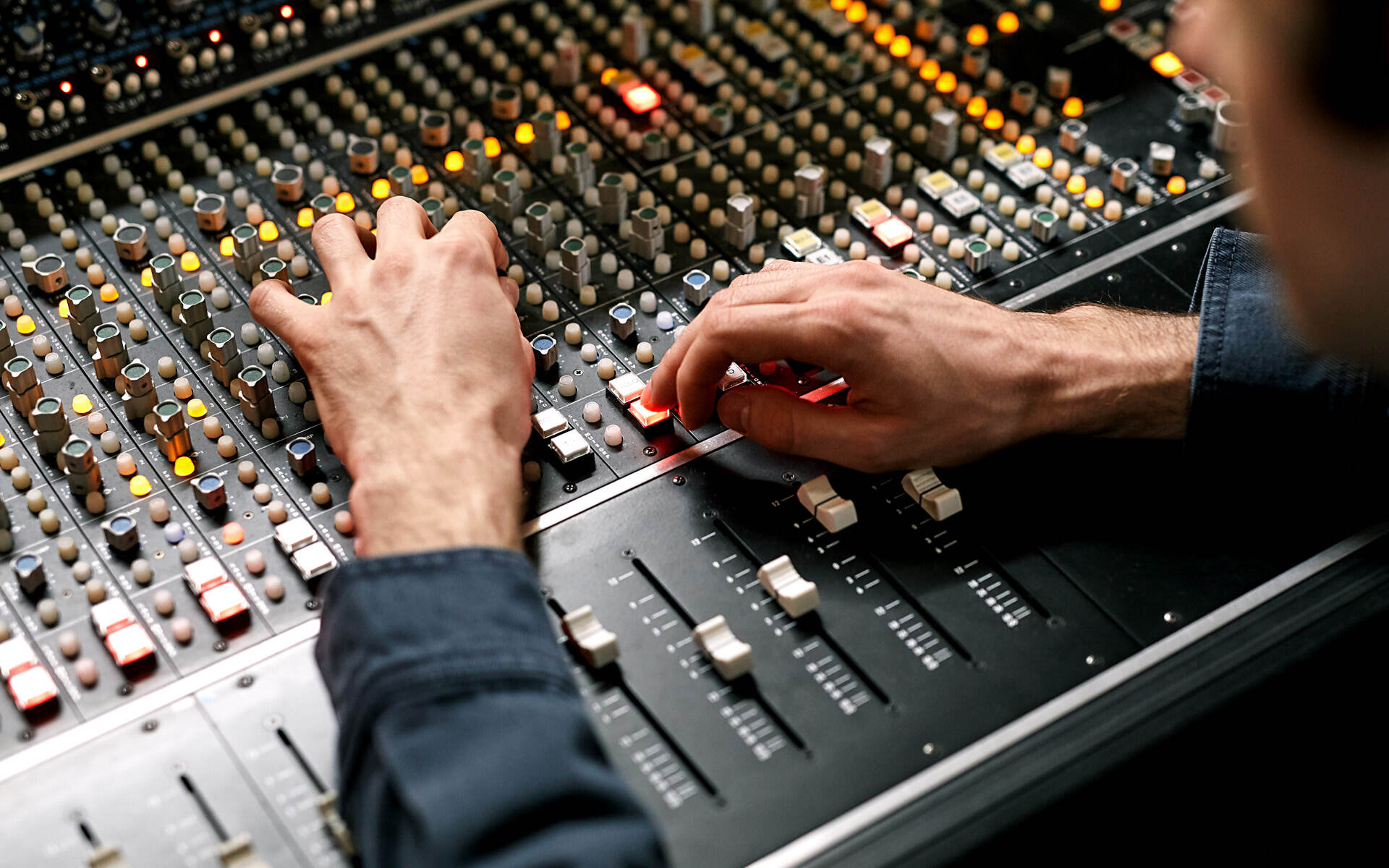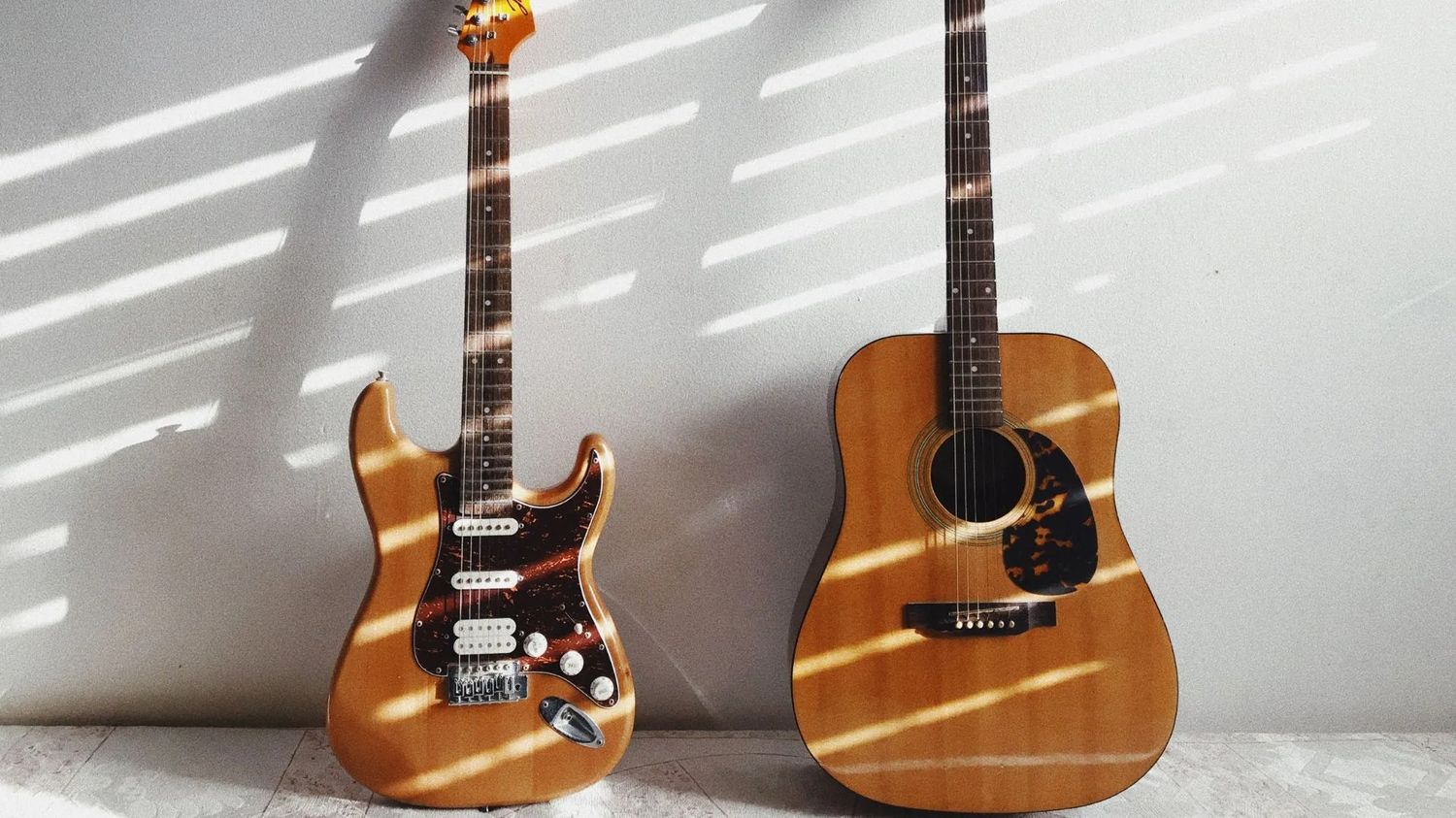Home>Instruments>Guitar>What Do I Need To Play An Electric Guitar


Guitar
What Do I Need To Play An Electric Guitar
Published: February 15, 2024
Learn about the essential equipment and accessories needed to start playing an electric guitar. Find out what you need to begin your guitar journey.
(Many of the links in this article redirect to a specific reviewed product. Your purchase of these products through affiliate links helps to generate commission for AudioLover.com, at no extra cost. Learn more)
Table of Contents
Introduction
So, you’ve decided to take the plunge and learn to play the electric guitar. Congratulations! You’re about to embark on a musical journey filled with excitement, creativity, and self-expression. Whether you’re drawn to the raw power of rock ‘n’ roll, the soulful melodies of blues, or the technical prowess of heavy metal, the electric guitar offers a versatile and dynamic platform for unleashing your musical potential.
Before you can start rocking out and melting faces with blistering solos, you’ll need to ensure that you have the essential equipment to play an electric guitar. In this guide, we’ll walk you through the must-have items and optional accessories that will set you up for success on your electrifying musical quest.
From the instrument itself to the gear that helps shape your sound, each component plays a crucial role in crafting your sonic identity. So, let’s dive in and explore the essential equipment needed to play an electric guitar!
Essential Equipment
When it comes to playing the electric guitar, having the right gear is essential for creating the sound you desire and ensuring a smooth playing experience. Here are the fundamental items you’ll need to get started:
- Electric Guitar: The centerpiece of your musical arsenal, the electric guitar comes in various shapes, sizes, and tonal configurations. From the iconic designs of Fender and Gibson to the sleek modern offerings from companies like Ibanez and PRS, choosing the right electric guitar is a deeply personal decision that hinges on factors such as playing style, tonal preferences, and aesthetic appeal.
- Amplifier: An amplifier is indispensable for translating the electric guitar’s signal into audible sound. Whether you prefer the classic warmth of tube amps or the convenience of solid-state models, selecting an amplifier that complements your playing style and musical genre is crucial for achieving your desired tone.
- Cables: To connect your electric guitar to the amplifier, you’ll need high-quality instrument cables. Reliable cables ensure a clean and interference-free signal transmission, preventing unwanted noise and signal degradation.
- Picks: Picks, also known as plectrums, come in various thicknesses and materials, each imparting a distinct attack and feel to your playing. Experimenting with different picks can help you find the right fit for your playing style and tonal preferences.
- Tuner: Keeping your electric guitar in tune is essential for producing harmonious sounds. A digital tuner provides accurate and convenient tuning, ensuring that your instrument is always ready to deliver pitch-perfect performances.
By assembling these fundamental components, you’ll establish a solid foundation for your electric guitar journey. With the right equipment in hand, you’re ready to unleash your creativity and embark on a thrilling musical odyssey.
Electric Guitar
The electric guitar stands as a symbol of musical innovation and artistic expression, captivating audiences with its electrifying sound and captivating presence. Unlike its acoustic counterpart, the electric guitar relies on electronic amplification to produce its distinct tones, making it a versatile and dynamic instrument suited for a wide range of musical genres.
When choosing an electric guitar, several factors come into play, influencing the instrument’s playability, tonal characteristics, and aesthetic appeal. The body shape, neck profile, and pickup configuration all contribute to the guitar’s sonic identity, allowing players to explore a myriad of tonal possibilities.
Classic electric guitar designs, such as the Stratocaster and Telecaster from Fender, embody timeless appeal and have left an indelible mark on music history. These instruments are revered for their iconic tones and ergonomic designs, making them popular choices for musicians across genres.
For those seeking a heavier, more aggressive sound, the sleek and menacing profiles of guitars from brands like Gibson and ESP offer a perfect match. With powerful humbucking pickups and extended-range options, these guitars cater to the sonic demands of hard rock, metal, and progressive music.
Furthermore, the electric guitar market boasts a wealth of innovative designs and features, catering to the diverse needs of modern players. From extended-range guitars with multiple strings to ergonomic contours for enhanced comfort during extended playing sessions, the options are virtually limitless.
Ultimately, selecting the right electric guitar involves finding a balance between playability, tonal versatility, and personal preference. Whether you’re drawn to the timeless allure of vintage instruments or the cutting-edge innovations of contemporary designs, your electric guitar serves as a conduit for your musical expression, empowering you to carve out your sonic identity with every note you play.
Amplifier
Central to the electric guitarist’s sonic arsenal, the amplifier plays a pivotal role in shaping the instrument’s raw signal into a powerful and expressive sound. With a myriad of options available, selecting the right amplifier is crucial for achieving the desired tone and unlocking the full potential of the electric guitar.
Tube amplifiers, revered for their warm and responsive tones, have long been favored for their rich harmonic saturation and touch-sensitive dynamics. These amplifiers are prized for their ability to deliver organic, vintage-inspired sounds and are cherished by players seeking classic rock, blues, and jazz tones.
On the other hand, solid-state amplifiers offer reliability, portability, and a diverse range of tonal options. Boasting pristine cleans, high-gain saturation, and built-in effects, solid-state amps cater to the needs of players across various genres, from pristine jazz tones to blistering metal riffs.
For those craving the best of both worlds, hybrid amplifiers combine tube warmth with solid-state reliability, offering a compelling blend of classic and modern tonal characteristics. These versatile amplifiers provide a flexible platform for sculpting a wide array of sounds, making them suitable for players with eclectic musical tastes.
Moreover, the advent of digital modeling amplifiers has revolutionized the landscape of tone shaping, offering an extensive selection of amp models, effects, and signal processing capabilities within a single unit. These amplifiers provide unparalleled versatility, allowing players to explore an expansive sonic palette and effortlessly switch between iconic amp tones at the touch of a button.
When choosing an amplifier, factors such as wattage, speaker configuration, and onboard features should be considered to align with your playing environment and musical preferences. Whether you seek the vintage warmth of tube-driven tones, the convenience of digital versatility, or the reliability of solid-state power, the right amplifier will serve as your sonic ally, empowering you to craft captivating sounds and embark on a boundless musical journey.
Cables
Often overlooked but undeniably essential, cables are the unsung heroes of the electric guitarist’s rig, facilitating the crucial link between the instrument and the amplifier. While seemingly mundane, the quality and reliability of cables play a significant role in preserving the integrity of your signal and ensuring a seamless connection between your electric guitar and amplifier.
High-quality instrument cables are characterized by durable construction, reliable connectors, and effective shielding to minimize interference and signal degradation. When selecting cables, factors such as length, thickness, and connector type should be considered to meet the specific demands of your playing setup.
Choosing the appropriate cable length is crucial for accommodating the distance between your electric guitar and amplifier while minimizing excess slack that can lead to clutter and potential tripping hazards. Additionally, thicker gauge cables offer enhanced signal conductivity and durability, making them suitable for live performances and rigorous touring schedules.
Connector types also play a vital role in ensuring a secure and stable connection. Straight and right-angled connectors provide flexibility in accommodating different setups, while gold-plated connectors offer superior conductivity and corrosion resistance, contributing to a reliable and consistent signal transmission.
Furthermore, shielded cables are paramount for minimizing electromagnetic interference and noise, preserving the clarity and fidelity of your guitar’s signal. Effective shielding prevents unwanted hum, buzz, and radio frequency interference, allowing your instrument’s true voice to shine through without unwanted sonic artifacts.
By investing in high-quality cables, you can safeguard the integrity of your signal chain, minimize potential signal loss, and ensure a robust and reliable connection between your electric guitar and amplifier. Whether you’re practicing at home, recording in the studio, or performing on stage, dependable cables are indispensable allies in preserving the fidelity and integrity of your electric guitar’s sonic output.
Picks
While seemingly diminutive in size, picks, also known as plectrums, wield a profound influence on the tonal characteristics and playability of the electric guitar. These small, often triangular pieces of material are instrumental in shaping the attack, articulation, and overall sound of the instrument, making them indispensable tools for players across various musical genres.
Picks come in an array of materials, including celluloid, nylon, Delrin, and various polymers, each imparting distinct tonal properties and tactile responses to the player. The thickness of a pick also significantly affects its playability and tonal impact, with thinner picks offering flexibility and brighter, more articulate tones, while thicker picks provide enhanced control and a fuller, more robust sound.
Moreover, the shape of a pick influences its playability and sonic characteristics. Standard picks feature a traditional triangular shape, while jazz picks are smaller and more pointed, catering to intricate and fast-paced playing styles. Additionally, the beveled edges of some picks contribute to smoother string contact and reduced pick noise, enhancing overall clarity and precision.
Players often experiment with different pick materials, thicknesses, and shapes to find the ideal fit for their playing style and tonal preferences. Whether seeking the bright chime of a thin nylon pick for intricate arpeggios or the aggressive attack of a thick, sculpted Delrin pick for blistering power chords, the right pick can significantly enhance a player’s sonic palette and expressive capabilities.
Furthermore, the way a player holds and employs the pick can influence their technique and articulation, contributing to the unique nuances of their playing style. From alternate picking to sweep arpeggios, the pick serves as an extension of the player’s musical identity, leaving an indelible imprint on their sonic fingerprint.
By exploring the diverse options and nuances of picks, electric guitarists can uncover a wealth of tonal possibilities, refine their playing technique, and imbue their performances with personalized expression. With the right pick in hand, players can unleash their creativity and carve out their sonic identity with every note they play.
Tuner
Keeping your electric guitar in tune is paramount for achieving pristine and harmonious sound quality, making a reliable tuner an indispensable tool for every guitarist. Whether you’re practicing at home, recording in the studio, or performing live on stage, a tuner ensures that your instrument is consistently in pitch, allowing you to deliver polished and sonically pleasing performances.
Traditional tuners, such as clip-on and pedal tuners, provide accurate and convenient tuning solutions, allowing players to swiftly and precisely adjust their instrument’s pitch. These tuners offer visual displays or LED indicators that guide players in achieving precise tuning, ensuring that each string resonates at the intended pitch.
Furthermore, the advent of digital tuners has revolutionized the tuning experience, offering enhanced accuracy, versatility, and intuitive functionality. Chromatic tuners, in particular, enable players to tune to any desired pitch, making them suitable for alternate tunings and diverse musical styles.
Additionally, polyphonic tuners have emerged as a game-changing innovation, allowing players to tune all strings simultaneously, streamlining the tuning process and expediting setup time. This feature is particularly advantageous for quick tuning adjustments during performances and studio sessions, enhancing overall efficiency and workflow.
Moreover, the integration of tuning functionalities into multifunctional devices, such as pedalboards and multi-effects units, provides added convenience and space-saving benefits for players seeking an all-in-one solution. These integrated tuners offer seamless incorporation into a player’s existing setup, streamlining the rig while ensuring consistent and accurate tuning capabilities.
Whether you’re a seasoned professional or a burgeoning enthusiast, a reliable tuner is an essential companion that ensures your electric guitar remains in optimal playing condition. By incorporating a tuner into your practice routine and performance setup, you can uphold the integrity of your instrument’s tuning, allowing your musical expressions to resonate with clarity and precision.
Optional Accessories
While the essential equipment forms the cornerstone of your electric guitar setup, optional accessories can further enhance your playing experience, expand your sonic capabilities, and provide added convenience and comfort. These accessories cater to individual preferences and playing styles, offering a myriad of possibilities for customization and personalization.
- Effects Pedals: Effects pedals, ranging from overdrive and distortion to modulation and time-based effects, allow players to sculpt their tone and explore a diverse sonic palette. Whether seeking soaring lead tones, ambient textures, or rhythmic embellishments, effects pedals offer boundless creative potential and are integral to shaping a player’s signature sound.
- Guitar Strap: A comfortable and durable guitar strap is essential for extended playing sessions, providing support and stability while allowing for unrestricted movement. Additionally, stylish and ergonomic straps can complement the aesthetic appeal of your instrument, reflecting your personal flair and musical identity.
- Guitar Stand: A sturdy guitar stand offers a secure resting place for your instrument, safeguarding it from accidental falls and minimizing the need for constant setup and takedown. Guitar stands also showcase your instrument, adding a touch of sophistication to your practice space or performance area.
These optional accessories cater to individual preferences and playing styles, offering a myriad of possibilities for customization and personalization. Whether you’re seeking to expand your sonic palette with effects pedals, enhance comfort and mobility with a reliable guitar strap, or showcase your instrument with a sturdy guitar stand, these accessories empower you to tailor your playing experience to suit your unique musical journey.
Effects Pedals
Effects pedals are transformative tools that empower electric guitarists to shape their sonic identity, adding depth, texture, and character to their playing. These compact devices, ranging from overdrive and distortion to modulation and time-based effects, unlock a universe of tonal possibilities, allowing players to craft evocative sounds and explore a diverse sonic landscape.
Overdrive and distortion pedals are synonymous with the searing, saturated tones of rock and blues, providing players with the means to dial in rich harmonic textures, dynamic crunch, and blistering lead tones. These pedals imbue the electric guitar with raw power and expressive grit, enabling players to evoke emotive performances and commanding presence.
Modulation effects, including chorus, phaser, and flanger pedals, introduce captivating movement and spatial dimension to the guitar’s sound. By altering the pitch, time, and amplitude of the signal, these pedals infuse the music with ethereal swirls, lush textures, and immersive atmospheres, expanding the sonic palette and captivating listeners with evocative tonal landscapes.
Time-based effects, such as delay and reverb pedals, add spatial depth and ambience to the guitar’s sound, creating expansive sonic environments and enhancing the instrument’s expressive capabilities. From crystalline echoes to cavernous reverberations, these pedals imbue the music with a sense of space and emotion, enveloping listeners in captivating sonic realms.
Moreover, multi-effects units offer comprehensive solutions for players seeking a diverse array of effects within a single, integrated platform. These units provide a wealth of tonal options, versatile signal routing, and convenient preset management, catering to the dynamic needs of modern guitarists across various genres and playing environments.
By incorporating effects pedals into their rig, electric guitarists can unlock a boundless sonic palette, infuse their performances with expressive depth, and embark on a captivating musical journey filled with evocative textures and immersive soundscapes.
Guitar Strap
A reliable and comfortable guitar strap is an often-overlooked yet essential accessory for electric guitarists, providing support, stability, and mobility during performances and practice sessions. Beyond its functional role, a well-chosen guitar strap can also reflect the player’s personality and style, serving as a statement piece that complements the instrument’s aesthetic appeal.
Comfort is paramount when selecting a guitar strap, especially for extended playing sessions. Padded straps offer enhanced support and alleviate shoulder fatigue, allowing players to focus on their performance without discomfort. Additionally, adjustable length and width contribute to a personalized fit, accommodating players of varying heights and preferences.
Furthermore, the material and construction of the strap play a pivotal role in its durability and reliability. High-quality leather, nylon, and woven fabrics provide robust and long-lasting support, ensuring that the instrument remains secure and stable during vigorous performances. Reinforced stitching and secure strap locks offer added peace of mind, preventing accidental detachment and safeguarding the instrument from potential damage.
Besides functionality, the visual appeal of a guitar strap adds an element of flair and individuality to the player’s stage presence. Whether adorned with intricate patterns, bold colors, or personalized embroidery, a stylish strap can complement the instrument’s aesthetics and reflect the player’s unique identity, adding a touch of personality to their performance.
Moreover, ergonomic considerations, such as wide and contoured designs, distribute the instrument’s weight evenly across the player’s shoulder, reducing strain and enhancing playing comfort. This is particularly beneficial for guitarists who favor dynamic movement and energetic stage presence, ensuring that the instrument remains secure and stable throughout their performance.
By selecting a comfortable, durable, and visually appealing guitar strap, electric guitarists can enhance their playing experience, express their personal style, and perform with confidence and comfort. Whether on stage, in the studio, or during practice sessions, a well-chosen guitar strap serves as a reliable ally, supporting the player’s musical journey with steadfast comfort and style.
Guitar Stand
A sturdy and reliable guitar stand is an indispensable accessory for electric guitarists, providing a secure and accessible resting place for their instrument when not in use. Beyond its practical function, a well-designed guitar stand offers convenience, protection, and an elegant display for the instrument, making it an essential addition to any guitarist’s practice space, studio, or stage setup.
One of the primary benefits of a guitar stand is the convenience it provides for quick access to the instrument during practice sessions and performances. By keeping the guitar readily available and within arm’s reach, players can seamlessly transition between playing, tuning, and making adjustments, optimizing their practice efficiency and performance workflow.
Furthermore, a guitar stand safeguards the instrument from potential damage caused by accidental falls or improper storage. By providing a stable and secure cradle for the guitar, the stand minimizes the risk of impact-related incidents, ensuring that the instrument remains in pristine condition and ready for immediate use.
Displaying the guitar on a stand also adds an aesthetic touch to the practice space or performance area, showcasing the instrument with elegance and sophistication. Whether in a studio, on stage, or at home, a well-positioned guitar stand elevates the visual appeal of the instrument, adding a touch of professionalism and pride to the player’s environment.
When selecting a guitar stand, considerations such as stability, adjustable height, and protective padding are crucial for ensuring the instrument’s safety and stability. A stable base and secure neck support prevent the guitar from tipping over, while soft padding shields the instrument’s finish from scratches and abrasions, preserving its pristine appearance.
Furthermore, collapsible and portable designs offer added convenience for musicians who require a compact and easily transportable solution for rehearsals, gigs, and studio sessions. These stands provide a space-saving and practical storage option while ensuring that the instrument remains readily accessible and well-protected.
By incorporating a reliable and well-crafted guitar stand into their setup, electric guitarists can optimize their practice environment, protect their instrument, and showcase their musical pride with elegance and functionality. Whether in a studio, on stage, or at home, a quality guitar stand serves as a steadfast ally, providing convenience, protection, and a touch of sophistication to the guitarist’s musical journey.
Conclusion
Embarking on the journey of playing the electric guitar is a thrilling and rewarding pursuit, filled with boundless opportunities for musical expression and creativity. As you delve into the world of electrifying tones and captivating melodies, equipping yourself with the essential equipment and optional accessories is crucial for honing your craft and unlocking your sonic potential.
The electric guitar, with its captivating sound and dynamic versatility, serves as the centerpiece of your musical arsenal, offering a platform for boundless creativity and self-expression. Selecting the right electric guitar that resonates with your playing style, tonal preferences, and aesthetic sensibilities is a deeply personal decision that sets the stage for your sonic journey.
Accompanying your electric guitar, the amplifier, cables, picks, and tuner form the foundational elements of your setup, ensuring a seamless and reliable playing experience. From the raw power of overdriven tones to the crystalline clarity of pristine cleans, these components work in harmony to bring your musical visions to life.
Furthermore, optional accessories such as effects pedals, guitar straps, and guitar stands offer avenues for customization, comfort, and convenience, enriching your playing experience and reflecting your individual style and preferences.
As you continue to explore the expansive world of electric guitar playing, remember that the gear you choose is not merely a collection of tools, but an extension of your musical identity. Each component, from the strings of your guitar to the effects at your feet, contributes to the sonic tapestry that defines your unique voice as a guitarist.
By embracing the essential equipment and optional accessories with discernment and creativity, you’ll craft a playing environment that resonates with your artistic vision and empowers you to unleash your musical prowess with confidence and conviction. Whether you’re practicing in solitude, recording in the studio, or commanding the stage, your gear will stand as a steadfast ally, supporting your musical odyssey with unwavering reliability and inspiration.
So, as you embark on this electrifying musical journey, may your gear serve as a conduit for your boundless creativity, your unwavering passion, and your unyielding dedication to the art of playing the electric guitar.


